Designer Nina Tolstrup has placed three immersive pavilions at the Strand as part of the London Design Festival, informed by Barbie Dreamhouses and mid-century modern Palm Springs architecture.
Tolstrup, founder of London-based design studio Studiomama, collaborated with Barbie creators Mattel and tourism agency Visit Greater Palm Springs to create an installation called Pavilions of Wonder.
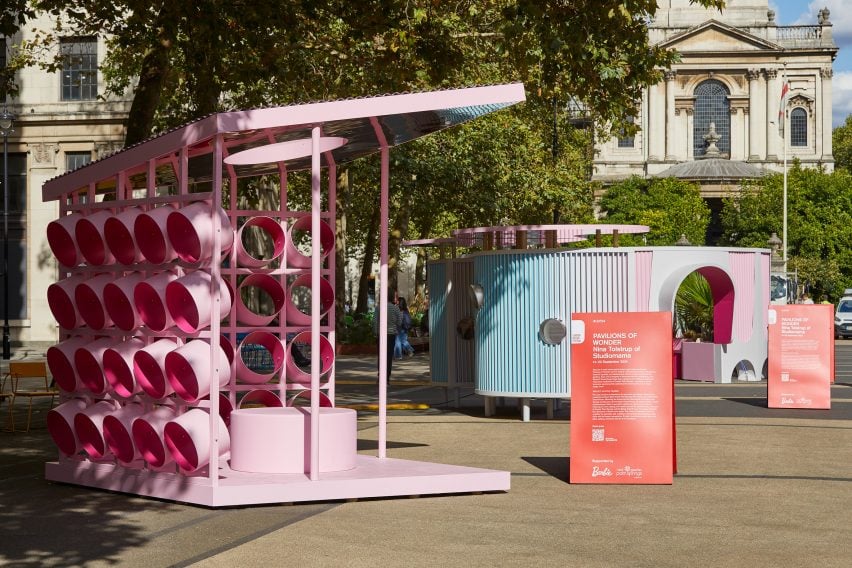
“The theme of the London Design Festival (LDF) this year is play, we initially thought of a fair,” Tolstrup told Dezeen about the installation now on display as part of the LDF. “Eventually we went to Palm Springs and explored the amazing houses there.”
Pavilions of Wonder celebrates the design of the Barbie Dreamhouses toys while also referencing the desert modernism of Palm Springs’ mid-century modern architecture in California. Barbie’s 65th anniversary is celebrated this year.
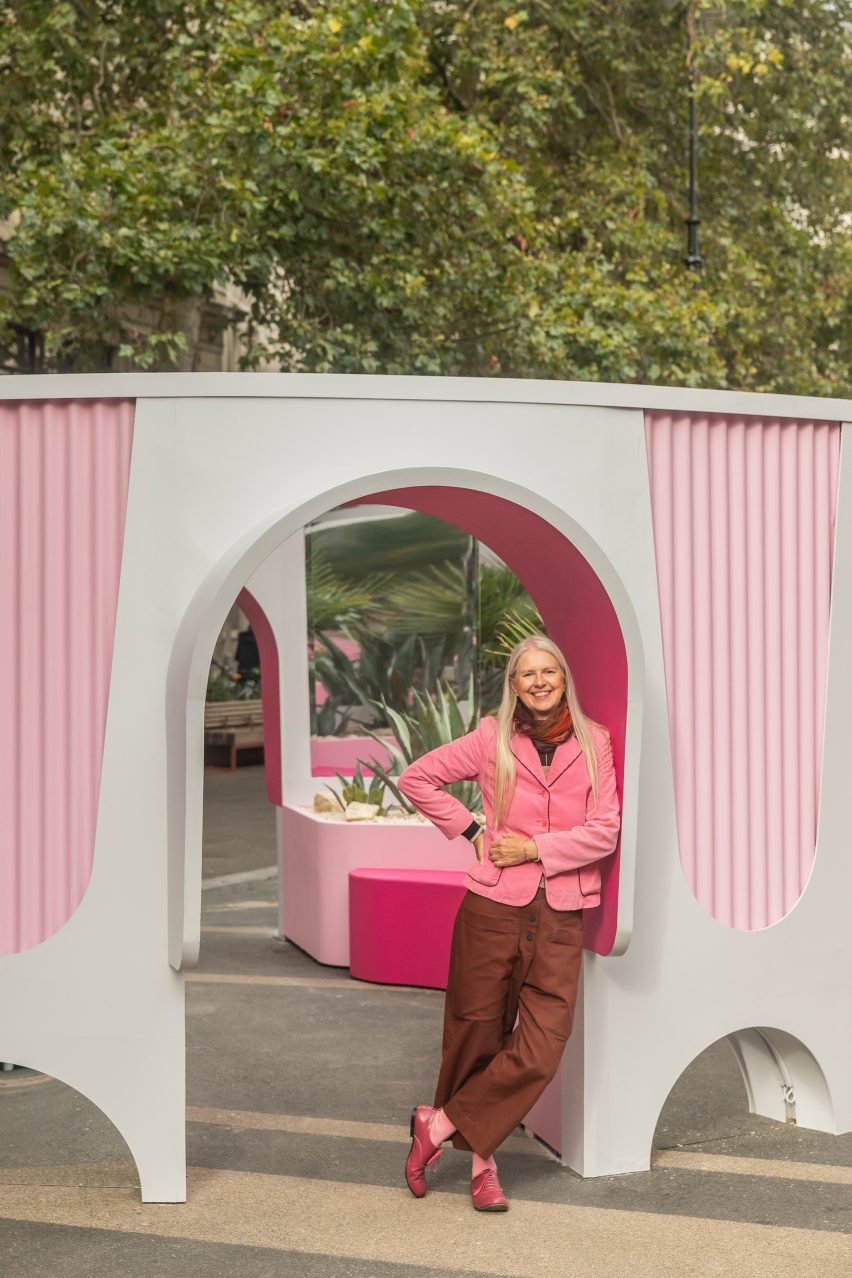
“The pavilions on the Strand fit together,” said the designer. “We went in early with our little traffic cones and marked everything out so we knew what the pavilions were going to look like, where they were going to sit in the space and how that would work to scale.”
The first pavilion “Dream: The Endless Garden” is the largest among the three pavilions, with a diameter of five meters and a height of three and a half meters. According to Tolstrup, “remains are in this footprint, but in different forms.”
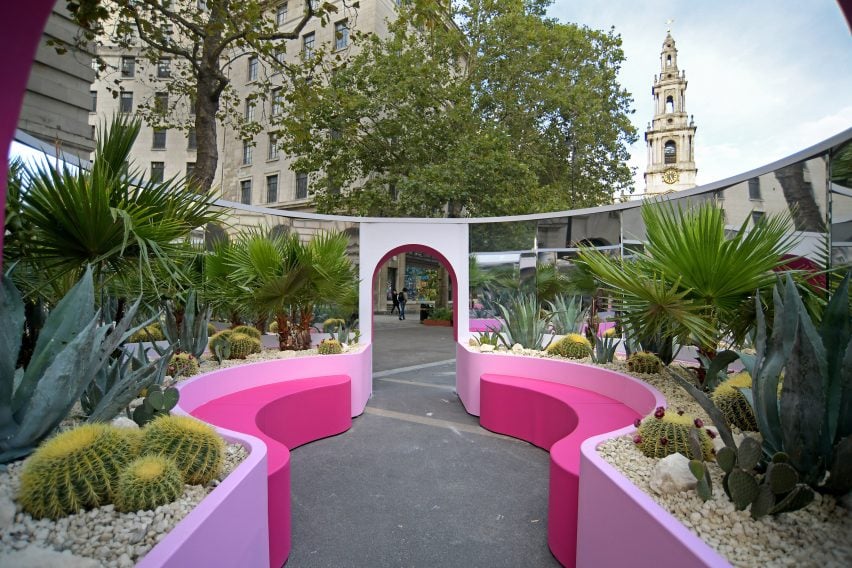
Inspired by the oasis landscape of Palm Springs and the mountain ranges surrounding the resort town, Tolstrup designed the first pavilion as a 360-degree circular structure, mirrored inside with a cactus garden.
Its sweeping arched facade was inspired in part by bank buildings in the Palm Springs area, including the Coachella Valley Savings and Loan, designed by local architect E Stewart Williams.
“Climate is very much an outdoor living situation that you’re tempted to be in when you’re out there,” the designer said. “Up in the mountains, everything is clear – the cactus gardens and incredible sunrises and sunsets. We wanted to bring that to the Strand.”
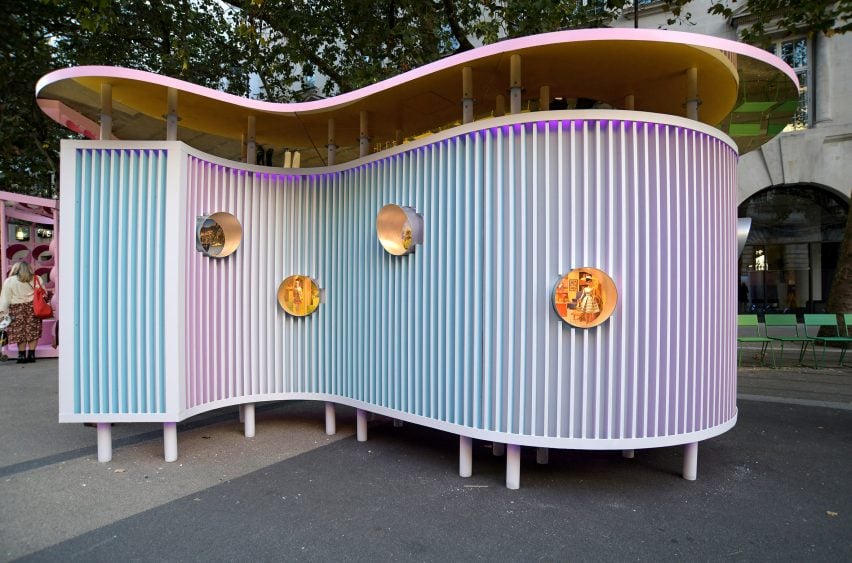
The pavilion was built by construction company Cloud & Horse using corrugated MDF sheet material that can be folded flat into sections and reused after dismantling without cutting. One side of the material is based on the pink color of the water.
According to Tolstrup, Swiss architect Albert Frey’s second home in Palm Springs, the Frey House II, provided insight into this more sustainable and cost-effective way of building.
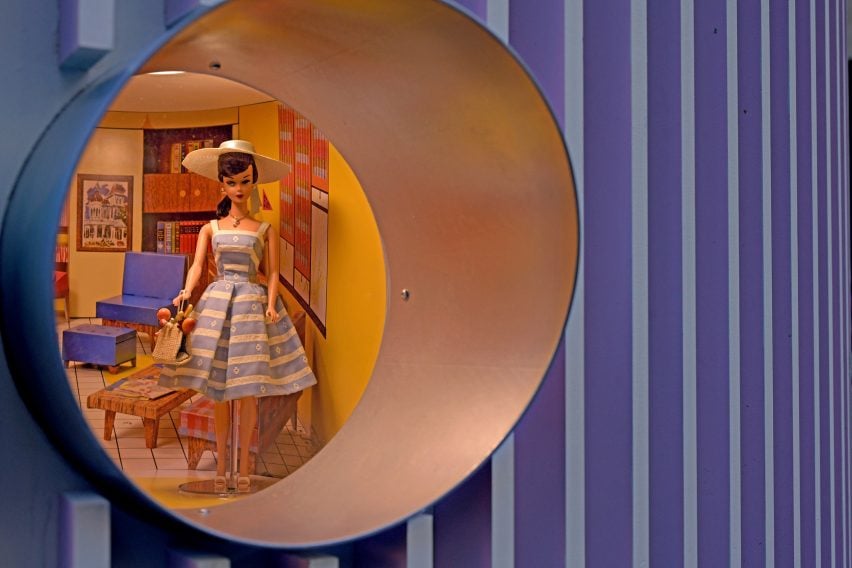
Discover: Design Stories, the second pavilion, is made with CNC-cut plywood placed on legs through a metal mesh system, which can also be folded.
A play on shape and form, this structure combines elements of geometric characters commonly found in the Palm Springs area with the aspects of straight, often square swimming pools. These are usually associated with mid-century architecture and Barbie Dreamhouse designs dating back to 1962.
“This pavilion is snake-shaped and has a mirrored roof,” said Tolstup. “There we have peepholes, windows into Barbie’s world that you can see and explore.”
Mattel provided the design team with vignettes of the Barbie Dreamhouse background to make them aware of the eyes. Each opening in the structure displays real-life Barbie dolls throughout history.
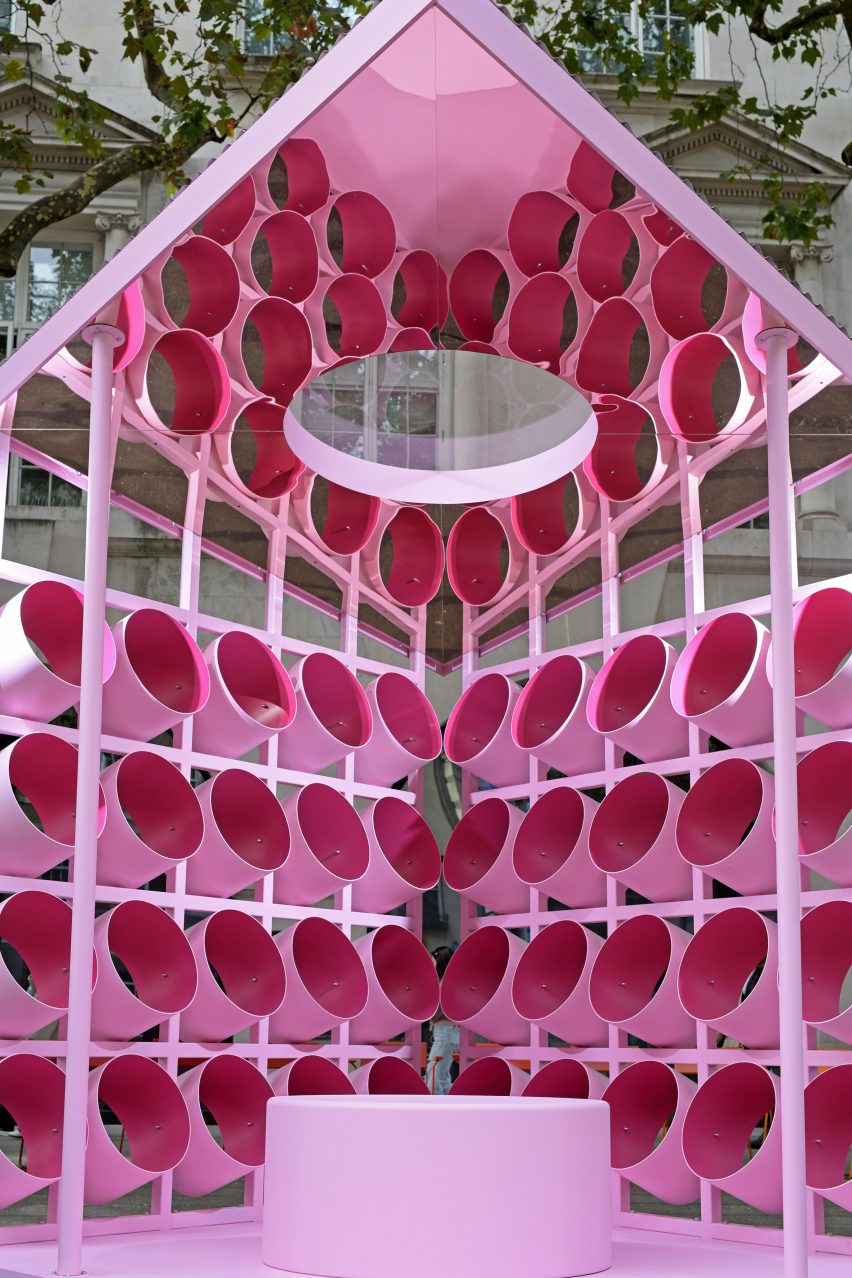
The third pavilion, Reflect: Playful Pauses, was inspired by Palm Springs City Hall and the streetcar gas station designed by Frey.
The gas station is notable for its distinctive hyperbolic paraboloid roof, a reference to previous Barbie bedrooms that featured similar canopied roofs.
Constructed as a “very simple metal grid”, the pavilion has a pointed roof and a kaleidoscopic circular decoration made of painted drainage pipes.
“The idea that your view distorts or changes and reflects as you walk is an effect used in front of City Hall,” Tolstrup said. “The qualities of midcentury architecture in Palm Springs, there’s this wonderful simplicity.”
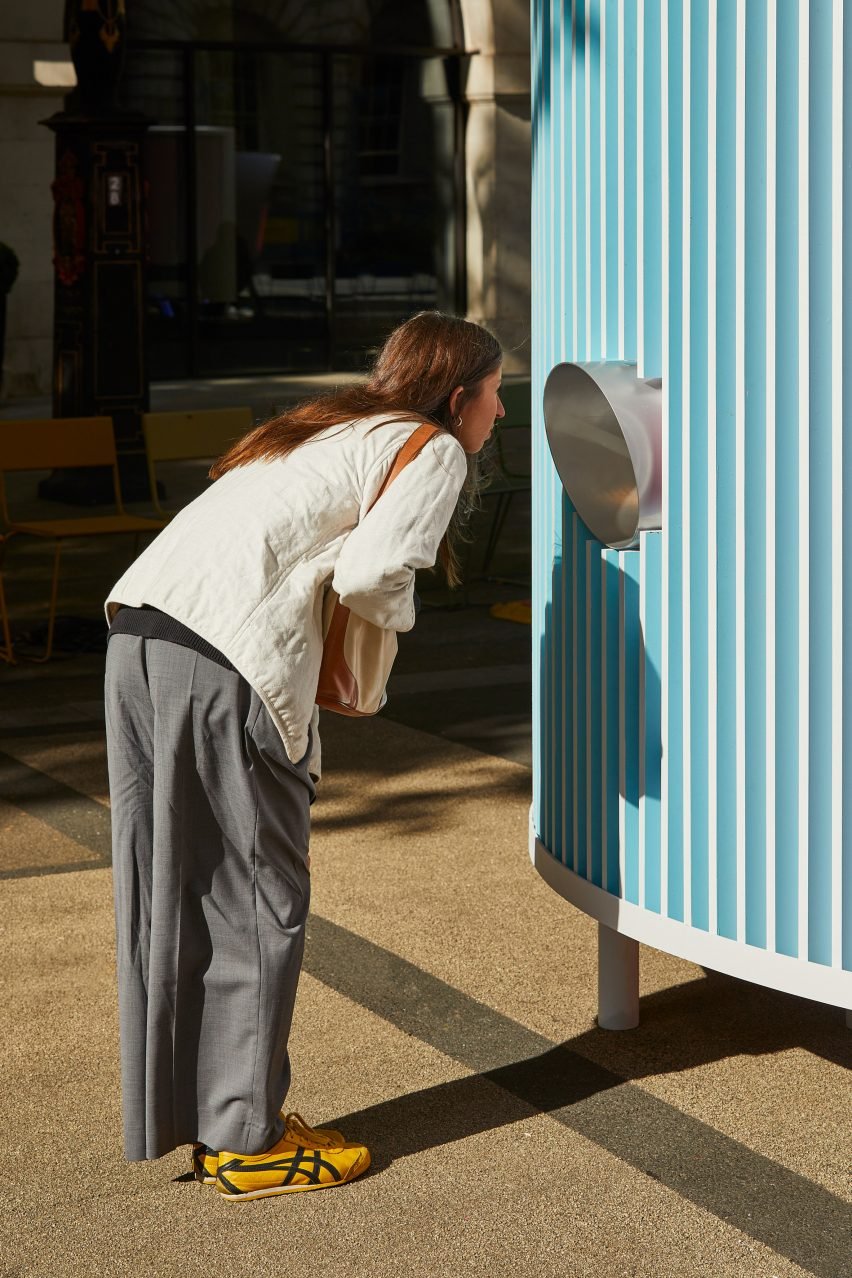
All three structures are illuminated at night, providing a colorful intervention to awaken the curiosity of pedestrians in the area.
“London’s very central location creates a lot of traffic in itself,” said Tolstrup. “The installation is not a theme park, but still inspired by this idea of play, you can walk around and have different experiences. It should invite interaction and it should be colorful.”
Other LDF events and installations include a modular furniture exhibition and an exhibition and auction of glasses by designers and artists.
Photography courtesy of London Design Festival unless otherwise noted.
Pavilions of Wonder will be on display from September 14th to 22nd as part of the London Design Festival. For an up-to-date list of architecture and design events taking place around the world, see the Dezeen Events guide.
#Nina #Tolstrup #channels #Barbie #Palm #Springs #LDF #installation